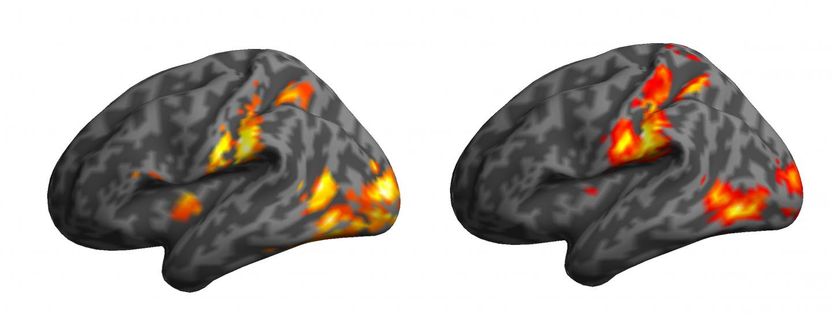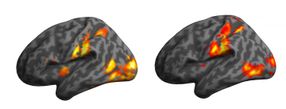Sometimes just watching hurts - and the signs of pain are seen in the brain
Advertisement
Some people claim to experience pain just watching something painful to happen. This is true especially of people suffering from complex regional pain syndrome (CRPS), a disabling chronic pain disorder in a limb. In CPRS patients, both own movements and just observing other persons' movements may aggravate the pain.

Brain responses to watching motor actions are altered in CRPS patients compared to healthy persons.
Jaakko Hotta/Aalto University

Patients suffering from CRPS may feel pain and show abnormal brain activations while watching a hand actions.
Jaakko Hotta/Aalto University


When you hurt yourself, pain receptors in the body send signals to different parts of the brain. As the result, you experience pain. Researchers in Aalto University, Finland, found that when CRPS patients feel pain caused by observing other person's movements, their brains display abnormal activation in many such areas that respond to normal physical pain. Thus the pain that the CRPS patients felt during movement observation presented similarities to the "normal" pain associated with tissue damage.
- CPRS is a very complex disease with devastating chronic pain. Its pathophysiology is incompletely understood and definitive biomarkers are lacking. Our discovery may help to develop diagnostics and therapeutic strategies for CRPS patients, tells neurologist Jaakko Hotta, Doctoral Candidate at Aalto University.
In the study, the researchers analyzed functional magnetic resonance images from 13 upper-limb CRPS patients and 13 healthy control subjects who were viewing brief videos of hand actions, such as a hand squeezing a ball with maximum force.
In the CPRS patients, watching hand actions was associated with abnormal brain activation patterns and a pattern-classification analysis differentiated the patients from the healthy subjects. These findings indicate that CRPS affects brain areas related to both pain processing and motor control.




























































